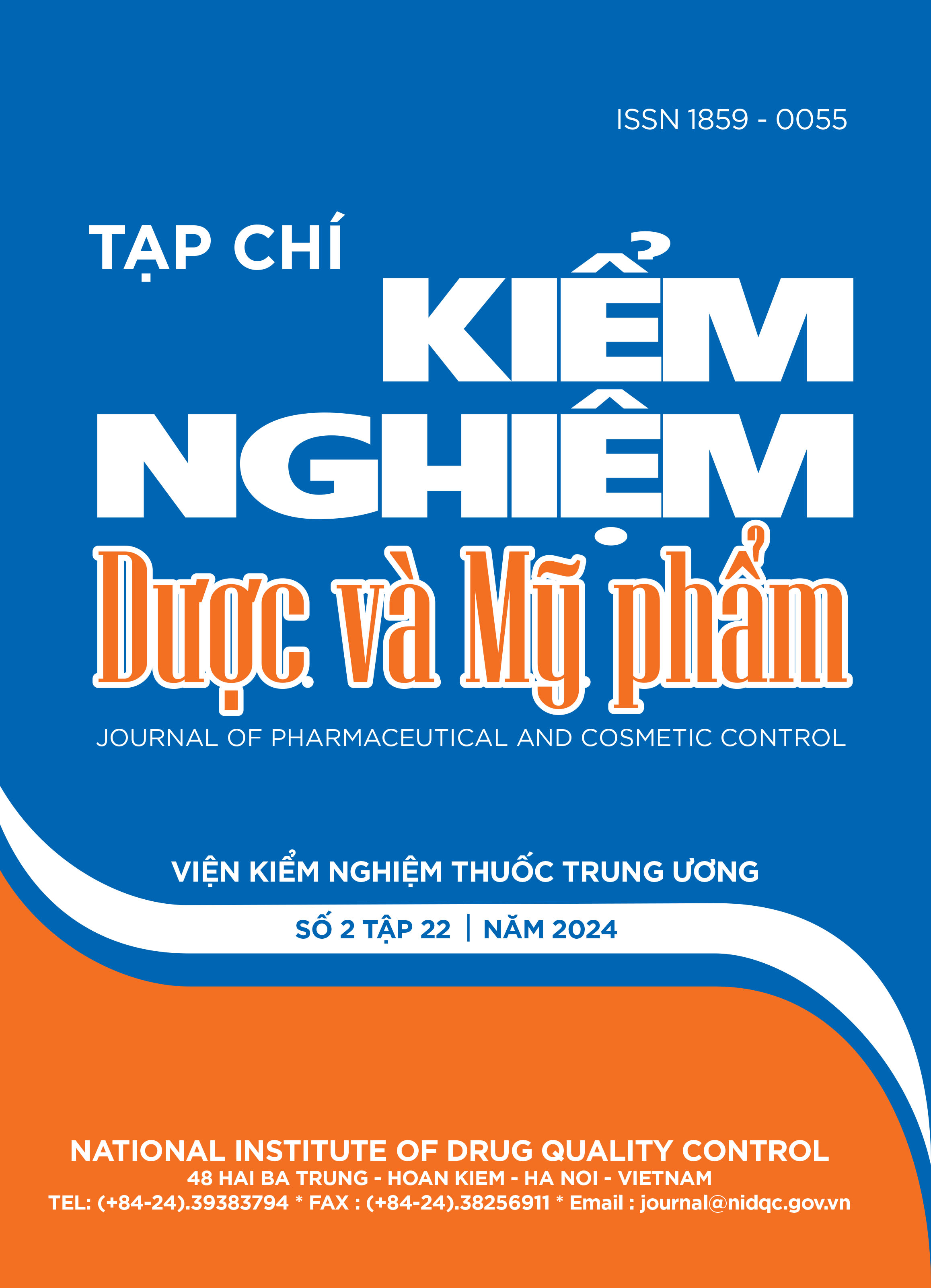Evaluation of total anthraquinone content changes and antioxidant activity of Fallopia multiflora prepared according to The Ministry of Health’s standard procedure (Circular 20/2017/TT-BYT) and Pharmacopoeia of Vietname V
Main Article Content
Abstract
Raw roots of Fallopia multiflora were processed according to the process by the Ministry of Health procedures (Circular 30/2017/C-MOH) and Vietnam Pharmacopoeia V (VP V). Samples were described sensory, determined moisture, total ash, powder screening, qualitative, and quantitative. Prepared Fallopia multiflora had the dark brown, the aroma, mild acrid taste. The components of Fallopia multiflora powder after processing noted several different characteristics such as the deformation, cluster of starch particles and the absence of spherical calcium oxalate crystals. The moisture content of the processed samples of Fallopia multiflora prescribed by the MOH and VP V was lower, while the total ash content of the processed medicinal samples was significantly higher compared to the raw sample. Quantitative analysis results recorded that the average total anthraquinone content in Fallopia multiflora prepared according to MOH and prepared according to VP V was 1.36 and 1.48 times lower than those of Fallopia multiflora. Furthermore, the antioxidant activity of the processed samples of Fallopia multiflora MOH and prepared according to VP V was lower compared to the raw samples.
Article Details
Keywords
Fallopia multiflora, prepared, anthraquinone, UV-Vis
References
2. Bounda G.A., Feng YU (2015), Review of clinical studies of Polygonum multiflorum Thunb. and its isolated bioactive compounds, Pharmacognosy Res, 7(3), pp. 36-225.
3. Đào Văn Phan 2020, Thuốc tác dụng trên cơ quan và trên máu, Dược lý học lâm sàng, Nhà xuất bản Y học, tr. 459.
4. Bộ Y tế (2017), Hướng dẫn phương pháp chế biến các vị thuốc cổ truyền. Thông tư số 30/2017/TT-BYT, Hà Nội, tr. 44-45.
5. Nguyễn Bảo Lộc, Nguyễn Thị Tuyết Xuân (2016), Ảnh hưởng của dung môi đến khả năng trích ly một số hợp chất có hoạt tính sinh học từ lá nha đam, Tạp chí Khoa học trường Đại học Cần Thơ, 46, tr. 30-36.
6. Ndhlala A.R., Moyo M., Van Staden J. (2010), Natural antioxidants: fascinating or mythical biomolecules?, Molecules, 15(10), pp. 6905-30.
7. Bui Thi Thuong, Pham Xuan Sinh, Nguyen Thanh Hai, Nguyen Thi Thanh Binh, Nguyen Xuan Tung (2020), Effect of Traditional Preparation Processing on the Total Phenol Content and Antioxidant Activity of Fallopia multiflora Thunb., VNU Journal of Science: Medical and Pharmaceutical Science, 36(4), pp. 23-30.
8. Wu X., Chen X., Huang Q., Fang D., Li G., Zhang G. (2012), Toxicity of raw and processed roots of Polygonum multiflorum, Fitoterapia, 83(3), pp. 469-475.


